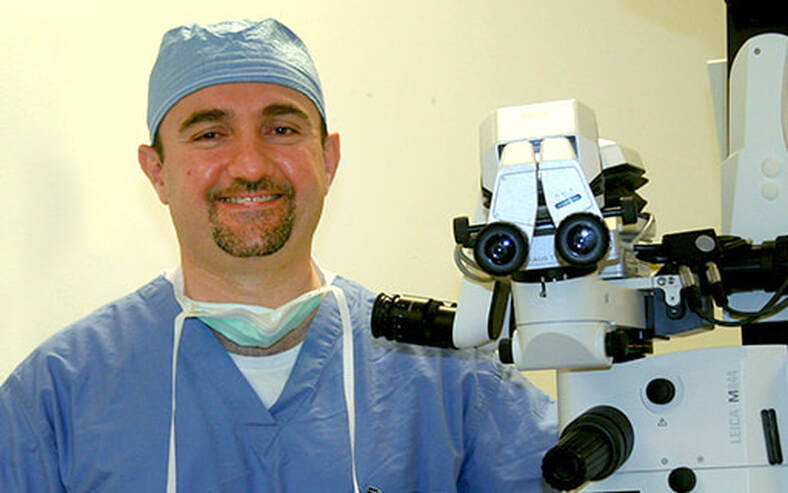TreatmentsIntravitreal Injections
The injection of medicine into the eye is the most common procedure in retina offices and is used to treat a variety of retina diseases. Depending on your diagnosis, the doctor will select the appropriate therapy to limit damage, stabilize, or in some patients, improve vision. Anti-VEGF medications block the abnormal growth of or leakage from blood vessels that can cause vision loss, and include the drugs Avastin (bevacitzumab), Lucentis (ranibizumab), Eylea (aflibercept). Other conditions may require the injection of steroids Triesence, (triamcinolone acetonide), Ozurdex (dexamethasone implant), different medications (Ocriplasmin), or a small bubble of gas to help the eye heal. Laser Photocoagulation
Lasers are used in the office to treat many different retinal diseases. Laser light can be precisely focused as the doctor directs the beam of light into the eye. For treatment, the patient is seated at a slit lamp, same as during an eye exam. Lasers may be used to treat diabetic retinopathy, retinal vein occlusion, macular edema, retinal tears, retinal detachment. For each condition, the laser is used in different ways with different expectations. Prior to treatment, the doctor will explain in detail your condition, treatment goals, the procedure, and any after-affects. Cryotherapy/Cryopexy
Cryotherapy treatment freezes a torn or detached area of the retina in order to keep it in place, and is used for areas a laser cannot access. Performed in the office, the doctor will apply anesthetic drops, then use a headlight and lens to guide the cryo device to repair the tear. Often between 3 and 12 spots are frozen to seal the tear. Prior to treatment, the doctor will thoroughly explain your condition, the procedure, and post-operative expectations. Photodynamic Therapy (PDT)
PDT is a painless procedure that combines drug and laser treatment to control abnormal blood vessels in ‘wet’ macular degeneration and certain cases of central serous retinopathy (CSR). During treatment, the doctor will inject a drug called Visudyne into a vein in your arm. After a short time, normal blood flow takes it into the affected vessels in the eye. When the doctor aims the non-thermal laser, or “cold” laser, into the eye, the light activates the drug to shrink the abnormal vessels, decreasing the risk of leaking or bleeding that can damage vision. Surgical Procedures
Vitrectomy is the removal of the vitreous gel that fills the eye in order to allow for a variety of repairs, including the removal of scar tissue, laser repair of retinal detachments and treatment of macular holes. Once surgery is complete, saline, a gas bubble, or silicone oil may be injected into the vitreous gel to help hold the retina in position. Unless the patient is in poor health or has severe disease, nearly all vitrectomies are outpatient procedures involving little or no pain and require only minimal anesthesia. A scleral buckle is used to fix retinal detachments, and may be used in combination with vitrectomy. In this procedure, a band of soft silicone is positioned on the outside of the eye (the sclera) and tightened so that it pushes the wall of the eye against the area with the retinal detachment. This closes the tear and allows the retina to reattach. Pneumatic retinopexy is an office procedure used to repair some retinal detachments. After applying anesthesia, a small bubble of gas is injected into the eye to press against the torn area of the retina. The patient will need to maintain the correct head position for a few days, which may feel awkward, but will keep the damaged area upper-most so that the bubble rises to meet it. Once the retina has reattached, laser or cryopexy may be performed to tightly seal the retina. |
Our Approach
Our practice incorporates evidence-based therapies and the latest proven technologies for a patient-centered approach in the treatment of retina diseases. The full scope of medicinal, office-based, and surgical interventions are available to our patients.
|
|
Copyright © 2021 Retina Consultants. All rights reserved.
|

